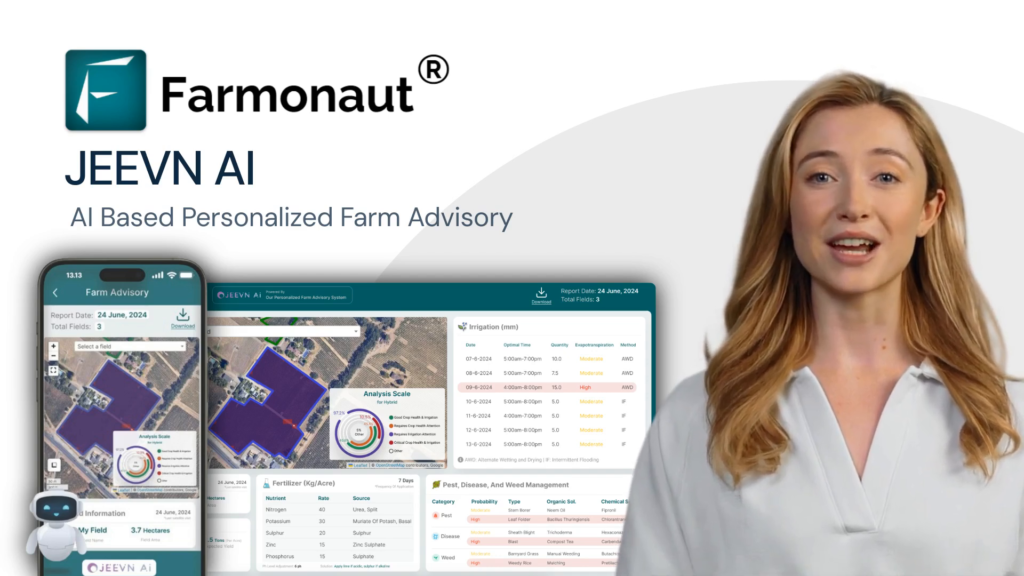Farming in California: Land, Jobs & 2025 Trends
Summary: The Cornerstone of California’s Agricultural Sector in 2025
California’s agricultural sector remains a cornerstone of both the state’s economy and the broader U.S. food system. As we look to 2025 and beyond, farming in California stands at a crossroads. With its diverse climate regions, fertile soil, and critical access to water resources, the state continues to be a national leader in agricultural production.
Farms provide abundant jobs, extensive farmland, and underpin food security and rural development—despite growing pressures from urban expansion, water scarcity, and regulatory changes. As we move into 2025, sustainability, technology, and workforce adaptation are at the heart of the state’s agricultural evolution.
“California farms produce over 400 crops, employing nearly 420,000 workers across 24.3 million acres as of 2024.”
The State of Farming Land in California in 2025
Farming land in California is some of the most productive, versatile, and extensive agricultural land in the country—yet it remains under constant pressure from multiple, sometimes conflicting, forces.
Land Use & Central Valley: The Nation’s Breadbasket
The Central Valley, often described as the nation’s breadbasket, dominates the farming landscape with its vast array of crops. California’s farmlands stretch over approximately 25 million acres as of 2025, though only a portion is actively cultivated due to water management challenges and shifting economic conditions.
- Major crops: fruits (e.g., strawberries, grapes), nuts (almonds, pistachios), vegetables (lettuce, tomatoes), and specialty crops like almonds and grapes.
- Farmland is fragmented by urban expansion and increasing land values, especially around urban centers like Los Angeles, San Diego, and the Bay Area.
- Soil fertility in California’s valleys and coastal regions remains high but requires careful stewardship to maintain productivity in 2025 and beyond.
Pressure from Urban Expansion & Regulatory Changes
- Urban Expansion: California’s population and urban regions continue to expand, devouring farmland, increasing competition for land, and driving up prices. This trend forces policy adjustments and land use conflict management.
- Regulatory Constraints: Environmental and zoning regulations may restrict areas for commercial agriculture but also incentivize the preservation of farming land in California through conservation easements and sustainable management practices.
Water Scarcity and Land Utilization in 2025
The driving concern over water resources, especially in drought-prone years like 2025, determines what portion of farmland can be actively cultivated. The ongoing drought conditions and climate change exacerbate water scarcity, with only the most efficiently managed lands consistently productive.
- Advanced irrigation technologies—such as precision and drip irrigation—are increasingly adopted to conserve water and extend acreage viability.
- Regenerative agriculture and climate-smart farming practices are on the rise, fostering more resilient land management.
California Farmland Trends 2020–2025
| Year | Farmland Area (million acres) |
Agricultural Jobs (thousands) |
Avg. Annual Water Use (million acre-feet) |
|---|---|---|---|
| 2020 | 25.5 | 430 | 32.7 |
| 2023 | 24.3 | 420 | 29.4 |
| 2025* | ~25.0 | ~400 | ~25.0 |
*2025 values are projected based on current trends.
Data highlights: California farmland is largely stable but under pressure; annual water allocations decline; job market adapts via technological integration.
“By 2025, California agriculture faces a 15% water allocation cut, driving rapid adaptation in crop selection and job roles.”
Farming Jobs in California: Trends and 2025 Outlook
In 2025, farming jobs in California and across the state’s agricultural sector continue to offer vital employment—particularly within rural communities. However, the labor market is evolving rapidly due to both technological innovations and economic shifts.
Job Landscape & Role Diversity
- 400,000+ farmworkers employed in 2025 (estimated), including seasonal and permanent roles.
- Covers planting, tending, harvesting crops, farm management, equipment operation, and agribusiness services.
- Workforce stability remains crucial for small towns and local economies, providing both income and community continuity.
Farming jobs California offers are increasingly split between traditional manual-intensive work and new high-tech roles, reflecting broader shifts in management and operation.
Transition: From Manual Labor to High-Tech Jobs
- Robotics and mechanization in harvesting and crop management streamline operations but also require workers to develop new skills.
- Drones for crop monitoring and AI-driven farm management systems are increasingly integrated.
Modern workforce initiatives focus on training workers for both classic and technological roles—ensuring skill evolution keeps pace with automation and precision agriculture.
Key Trends Affecting Farming Jobs in California
- Employment is stable but changing in nature, with growing demand for tech-enabled roles across farm management systems and remote operations.
- Programs target skill set development—from data analysis (drones, satellites) to new equipment operation.
- Labor shortages in manual tasks (especially within fruit, nut, and vegetable picking) are prompting innovations in mechanized solutions as well as immigration reforms to bolster the available workforce.
Importance of Farm Security, Diversity, and Community Welfare
Farming remains a pillar of food security and economic stability for rural areas. California’s diverse communities—including a significant immigrant and migrant worker population—are indispensable to the success of the sector. Ongoing initiatives promote fair wages, safe conditions, and healthcare access for farmworkers, ensuring the wellbeing and future outlook of these essential workers.
Access Cutting-Edge Farming Technology on Any Device
Experience farmland and crop management ease with Farmonaut’s multi-platform solution. Manage farming land in California with seamless access to real-time data:
Choose the best device for your operations—maximize productivity in your California farm, wherever you are!
Water Challenges and Resource Management
Water scarcity is the most significant challenge, putting immense pressure on farming land in California. 2025 projections show a further 15% reduction in water allocations, making sustainable irrigation and advanced water management critical.
- Prolonged droughts and reduced Sierra Nevada snowpack amplify competition for water between urban, environmental, and agricultural uses.
- Policy reforms around water rights—plus investments in water storage and recycling infrastructure—are essential for the sector’s long-term viability.
- Precision irrigation, soil moisture monitoring, and drought-tolerant crop varieties are being adopted on a broad scale.
For more detailed tracking and compliance, Farmonaut provides carbon footprinting and environmental monitoring services—allowing California farmers and agricultural businesses to adopt sustainable water, soil, and emissions practices for better food security and conservation.
Farm Level Solutions Toward Sustainability
- Drip and micro-irrigation: Reduce water use by delivering moisture directly to plant roots.
- Satellite and AI-based advisory systems: Monitor drought, soil health, and optimize water scheduling across vast farms. For powerful crop-level insights, explore Farmonaut’s crop plantation and advisory.
- Blockchain-based traceability: Enables transparent, verifiable records for sustainable farming practices and water conservation.
Land Use, Urban Expansion, and Farmland Preservation
Land use conflicts are a mounting challenge for farmland in California, especially in regions surrounding urban development. Increasing urban expansion means more farmland is being repurposed or threatened by non-agricultural interests.
Key Pressures and Preservation Efforts
- Land values in California’s prime farming regions are among the highest in the nation, tempting landowners to sell off to developers.
- Policy and preservation programs such as agricultural conservation easements, land trusts, and tax incentives aim to protect key farming parcels, especially within the Central Valley.
- Sustainable land management measures—including rotating crops, reducing soil degradation, and traceability solutions—are gaining ground.
Learn more about modern supply chain transparency and land management via Farmonaut’s blockchain traceability platform.
Economic & Social Importance of California Agriculture
California agriculture is a cornerstone of the state economy, generating billions in annual revenue—in 2025 this continues to underwrite food security and rural development.
- Exports: California’s diverse crop array enables the state to supply markets nationwide and globally, supporting export-driven economic growth.
- Rural development: Agriculture continues to be the economic engine behind small towns and communities.
- Cultural diversity: Farming relies on a large population of migrant and immigrant workers, who bring essential labor and reinforce the vitality of California’s agricultural regions.
Improving working conditions, championing fair wages for farmworkers, and broadening access to healthcare remain top priorities in 2025, crucial to ensuring the future outlook and sustainability of the sector.
Technological Adaptation & Smart Farming in 2025
The future of farming in California hinges on innovation: the rapid adoption of advanced technologies is transforming both land management and agricultural job roles.
- Satellite monitoring: Real-time monitoring of crops, soil health, and water usage optimizes productivity.
- Precision agriculture: Precision farming management apps (such as Farmonaut’s) enable large-scale tracking for better yields and lower resource input.
- AI & Machine Learning: Predictive analytics, pest management, and customized advisory solutions boost resilience.
- Environmental impact tracking: Carbon and water footprinting help farms meet regulatory and sustainability goals. See Farmonaut’s carbon footprinting feature for scalable adoption.
The integration of fleet and resource management solutions helps reduce costs and improve logistics, supporting both family farms and large agribusinesses across California.
Case in Point: Satellite-Verified Crop Insurance and Loans
To keep up with economic and climate risks, access to crop loans and insurance verified via satellite is invaluable. Learn more about the benefits on the Farmonaut crop loan & insurance platform—designed to reduce fraud, improve data access, and help growers withstand market volatility.
Sustainability & The Future of Farming in California
The outlook for farming in California is shaped by resource constraints, regulatory shifts, and the ever-present climate challenge. Yet, the state is uniquely positioned to lead the country—and even the world—in sustainable agriculture through:
- Smart farming initiatives that reduce water usage and emissions while raising productivity.
- Regenerative practices (e.g., cover cropping, organic transitions, carbon farming) for better soil health and ecosystem resilience.
- Digitized resource management—accessible on any device, supported by remote monitoring and AI analytics.
- Diversification in crop selection and workforce upskilling.
- Policy support that prioritizes food security, land conservation, and job creation.
The region’s agricultural resilience will be tested, but with the right tools and mindset, California farming will continue to underpin food supply, drive economic stability, and nurture thriving rural communities.
How Farmonaut Supports California Agriculture
At Farmonaut, we are committed to empowering California’s farms—from family fields to large-scale commercial operations—with cost-effective, real-time satellite monitoring, AI-driven analytics, and transparent resource management.
Our technologies help farmers:
- Access accurate, up-to-date insights on crop health for improved decision-making.
- Monitor soil and water conditions for better conservation practices.
- Implement blockchain traceability to meet evolving market and regulatory demands.
- Leverage fleet management and environmental tracking for operational efficiency and sustainability.
Utilize Farmonaut’s robust API to integrate real-time satellite data into your existing systems. Ready for developers— explore the API and check out detailed developer docs today.
Farmonaut Subscription Plans for Smart Farming
Unlock advanced features for land monitoring, resource optimization, and sustainability reporting directly from your desktop or mobile device.
Frequently Asked Questions (FAQ)
What are the main trends shaping farming in California in 2025?
Key trends include adoption of advanced irrigation and satellite technologies, a shift to climate-resilient cropping, workforce upskilling, increased focus on sustainable land management, and a 15% cut in water allocations driving rapid adaptation across all levels.
How much farmland remains in California in 2025?
Approximately 25 million acres of farmland persist, though the actively cultivated area fluctuates due to water shortages, land use shifts, and economic pressures from urban expansion.
What is the future outlook for farming jobs in California?
While traditional labor-only roles are shrinking, the overall job market remains solid. Many jobs are transitioning to roles requiring technical skills, from drone operation to data analysis, in response to increasing farm automation.
Where can I find more information about Farmonaut solutions?
Visit farmonaut.com for comprehensive resources—and try our web, Android, or iOS apps to monitor your crops and manage resources remotely.
How do new policies and regulations affect agricultural land use?
Environmental zoning and increased water regulation aim to prioritize farmland preservation, favoring sustainable practices but also increasing compliance complexity for commercial growers.
Conclusion: California’s Agricultural Landscape in 2025 and Beyond
Amidst land pressure, changing climate, and water challenges, farming in California is adapting—embracing innovation, sustainability, and evolving workforce strategies.
- Farmland remains a pivotal resource—but ongoing conservation and stewardship are crucial.
- Technological advances—from satellite-based monitoring to entire farm management ecosystems—are redefining what’s possible for yields, job security, and sustainability.
- Workforce and communities continue to evolve, reflecting the strength, resilience, and diversity at the heart of the California farm economy.
- Policy and infrastructure investment will drive the sector’s ability to withstand present and future challenges—reinforcing California agriculture as a national leader.
We invite everyone—producers, agribusinesses, policymakers, and those curious about the land that nourishes the nation—to stay informed, adopt best practices, and explore high-impact tools for the future of California farming.













